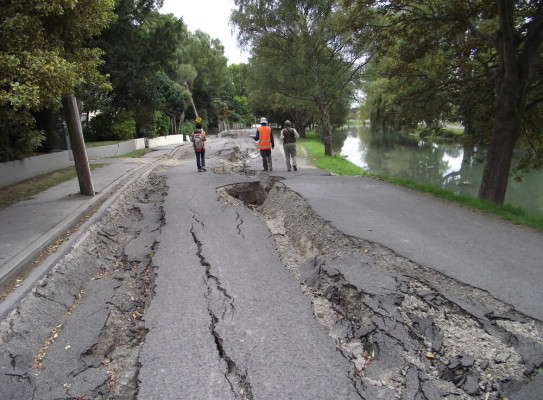6.3 magnitude earthquake part of aftershock sequence

This week’s devastating magnitude 6.3 earthquake centred southeast of Christchurch was part of the aftershock sequence that has been occurring since the September magnitude 7.1 quake near Darfield, 40km west of the city, an earthquake geologist said today.
It caused about 10km of subsurface rupture in an east-west direction between Halswell and Sumner on the coast, Natural Hazards Research Platform Manager at GNS Science, Kelvin Berryman said.
The number of aftershocks in the first 24 hours was higher than expected for a magnitude 6.3 earthquake, but had since tailed off sharply and they were now less frequent than aftershocks at the equivalent time after the magnitude 7.1 earthquake, Dr Berryman said.
In time, the rate of aftershock activity would decay back down to the level before the magnitude 6.3 earthquake, and then continue to decrease as before.
There was no obvious underground structure directly connecting the subsurface rupture that produced Tuesday’s earthquake with the Greendale Fault that ruptured in September’s magnitude 7.1 earthquake.
Aftershocks have been spreading both west and east since the magnitude 7.1 Darfield earthquake in September and this has resulted in increased stresses in the earth’s crust in the Canterbury region.
An expanding “cloud” of aftershocks, particularly at both ends of the main fault rupture, was a familiar pattern with large earthquakes worldwide, he said.
Dr Berryman said seismic energy travelled in waves and could be reflected off hard surfaces, much like sound waves.
With the epicentre of Tuesday’s earthquake in the Port Hills, a large amount of energy could have been reflected off hard volcanic rock at depth. This would have compounded the impact of the earthquake at the surface.
Geologists had suspected for some time that there were buried and unrecognised faults in Canterbury. Some of these faults might not have moved for many thousands of years, but had been reactivated as stresses in the earth’s crust had been redistributed since September 2010.
If you strip away the sediment and gravels of Christchurch and the Canterbury plains you would see the bedrock looking like broken glass from millions of years of earthquake activity
The underlying geology of Canterbury was the western end of the Chatham Rise which was broken with many east-west trending faults. Many geologists believed that modern-day tectonic plate motions in the South Island had reawakened some of these very old faults, causing them to fail.
The Greendale Fault that ruptured in September’s earthquake was one of these very old faults. Dr Berryman said the magnitude 7.1 earthquake in September was an extraordinarily complex event with up to four interconnected faults rupturing almost simultaneously.
“The pattern of aftershocks since September has also been complex, making it difficult for scientists to understand the stress-related mechanisms occurring in the earth’s crust.”
This week’s magnitude 6.3 earthquake appears to have been a less complex event with just one fault rupturing.
The frequency of aftershocks would continue to decrease in the coming weeks. When viewed over periods of many weeks, this reduction tended to be fairly regular, but there were often anomalies, as the magnitude 6.3 earthquake had shown.